Her Majesty's Royal Palace and Fortress of the Tower of London has been in use for nearly a thousand years, soak up the history, imagine the past, watch the changing of the guard and visit the Crown Jewels
The Tower of London
More pictures: Central London | Tower of London | National Gallery
The most popular fee-charging visitor attraction in Britain. The Tower of London combines piles of history, links to royalty, some everyday pomp and ceremony, an extensive ancient castle in very good repair that you can walk all over and that lives up to all your expectations of what castles should be like, museum exhibits to visit and the British Crown Jewels on public display all conveniently situated in the heart of London on the river Thames.
A UNESCO World Heritage Site and one of Britain's most iconic structures, the Tower was in constant use as a fortress palace from the 11th to 16th centuries, over which time it was extended and developed. It literally towered over all surrounding buildings until the 19th century.
What is often thought of as the "Tower of London", the large imposing square building with 4 corner towers topped with domes is actually called the "White Tower", the castle keep in the whole fortress complex, which was the first element to be built by the Normans after the conquest of Britain in 1066.
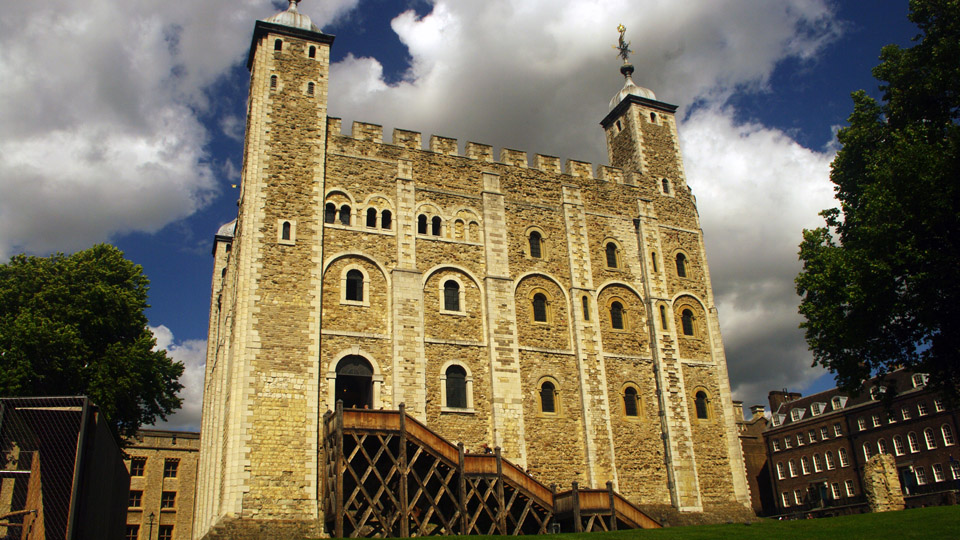
The White Tower - built in 1080 The original and central structure of what became the fortress of the Tower of London
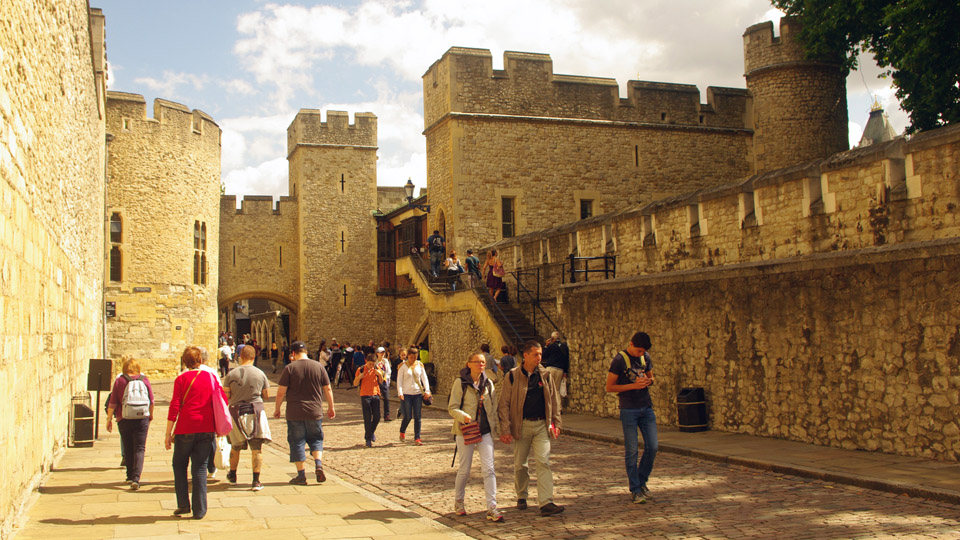
Inside the Entrance - "The Tower" occupies an area of 12 acres, two sets of thick stone walls surround a series of fortified towers and other buildings
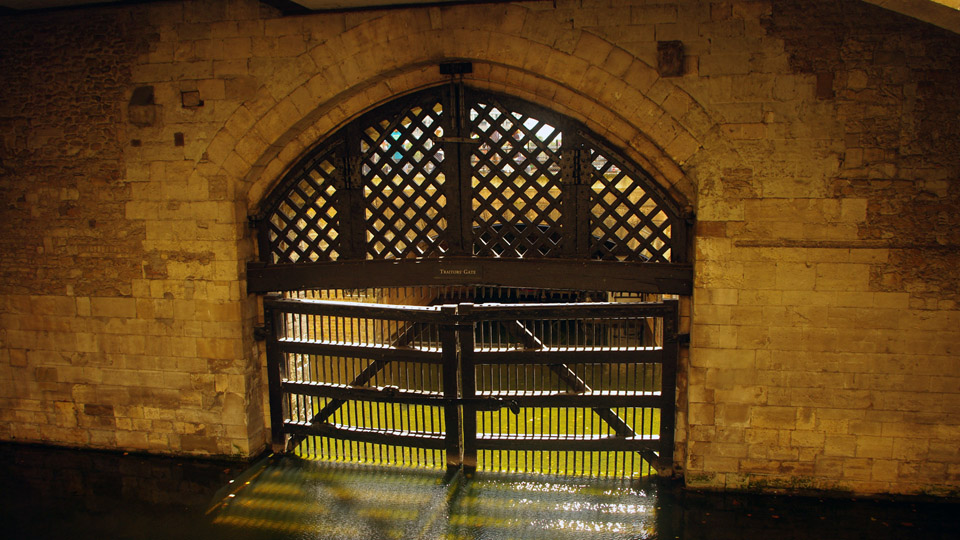
Traitors' Gate - A gate that opens onto the river Thames through which prisoners were brought
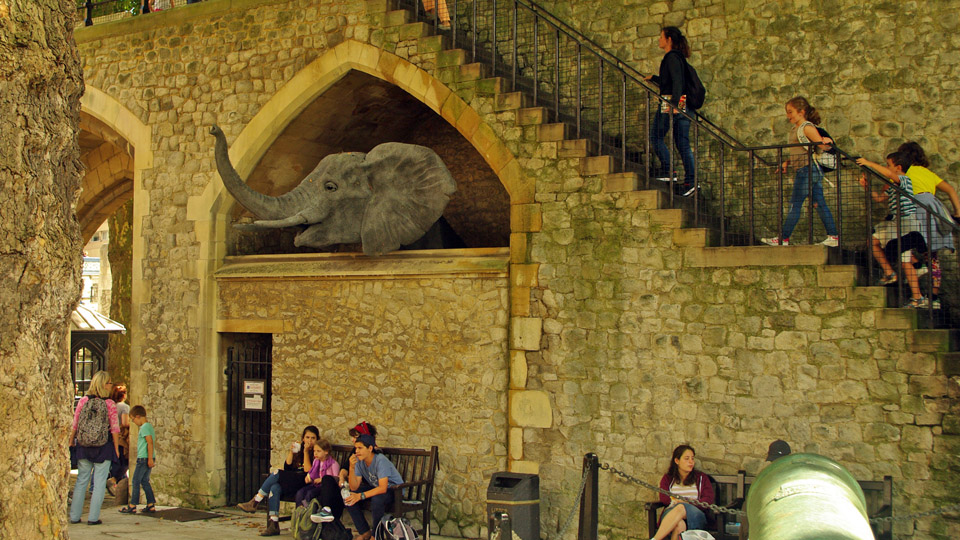
For 600 years exotic animals were kept at the Tower - like this (not real) elephant, they were part of the Royal Menagerie
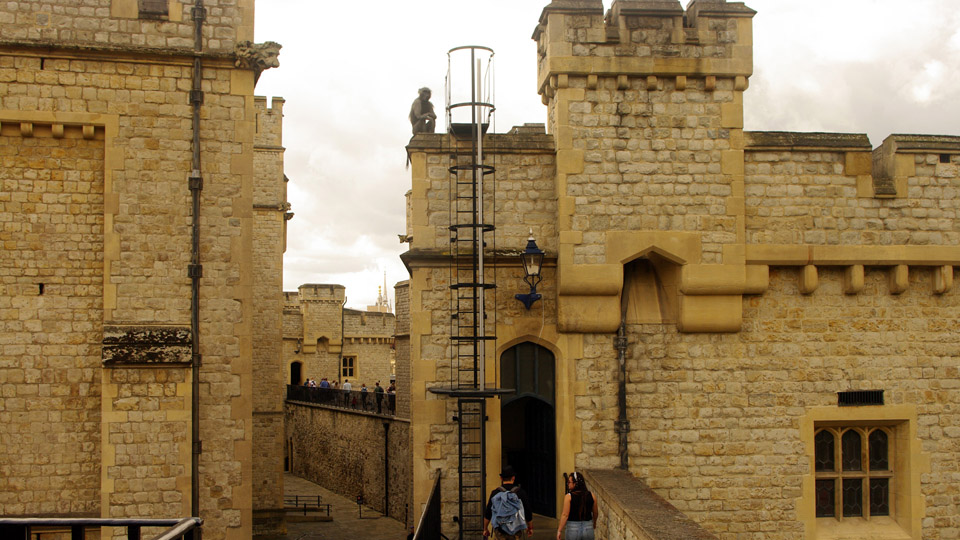
A tower on the inner wall - The tower is designed to make any attack as difficult as possible, it is full of narrow doorways and defensive positions to prevent progress
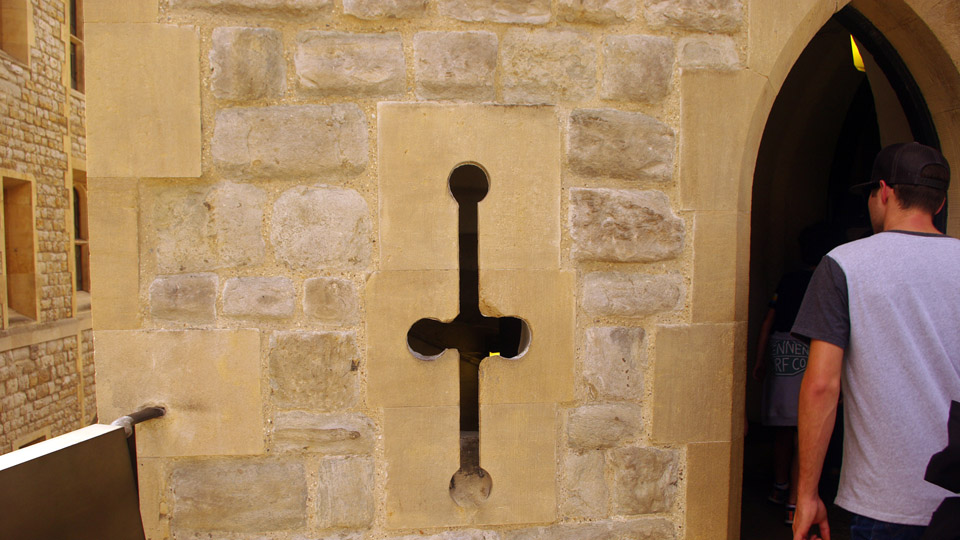
An embrasure or arrow slit - flat on the outside, these features allow defenders on the inside to shoot arrows at any attackers, these solid stone walls are about 3 feet thick by the door.
A Brief History of the Tower of London
- 1078-1097 - The White Tower built by the Normans to control London after the conquest of 1066.
- 1199-1216 - Royal Menagerie first established.
- 1255 - Henry III receives an elephant from King Louis of France, the first seen in England.
- 1303 - Crown Jewels moved to the tower.
- 1327-1377 - The central keep starts to be called the White Tower for its coating of whitewash.
- 1483 - The "Little Princes in the Tower" disappear, believed murdered.
- 1555 - First Yeoman Warders appointed.
- 1660 - The first sightseers admitted, including viewing of the Crown Jewels.
- 1804 - Menagerie open to the public. 1834 - menagerie leaves to become London Zoo.
- 1843 - Moat drained and filled.
- 1842-1862 - Waterloo barracks built.
- 1914-1916 - 11 German spies shot at the Tower.
- 1952 - Last prisoners held in the Tower.
-
The Tower is said to be haunted
by a number of ghosts
including Queen Anne Boleyn who was
beheaded in the Tower on the 9th of
May 1536. She appears near the execution
spot and her headless body has been
seen walking the corridors of the Tower.
The ghosts of the two Little Princes have been seen wearing nightgowns and clutching each other in terror, they can said to be heard throughout the Tower.
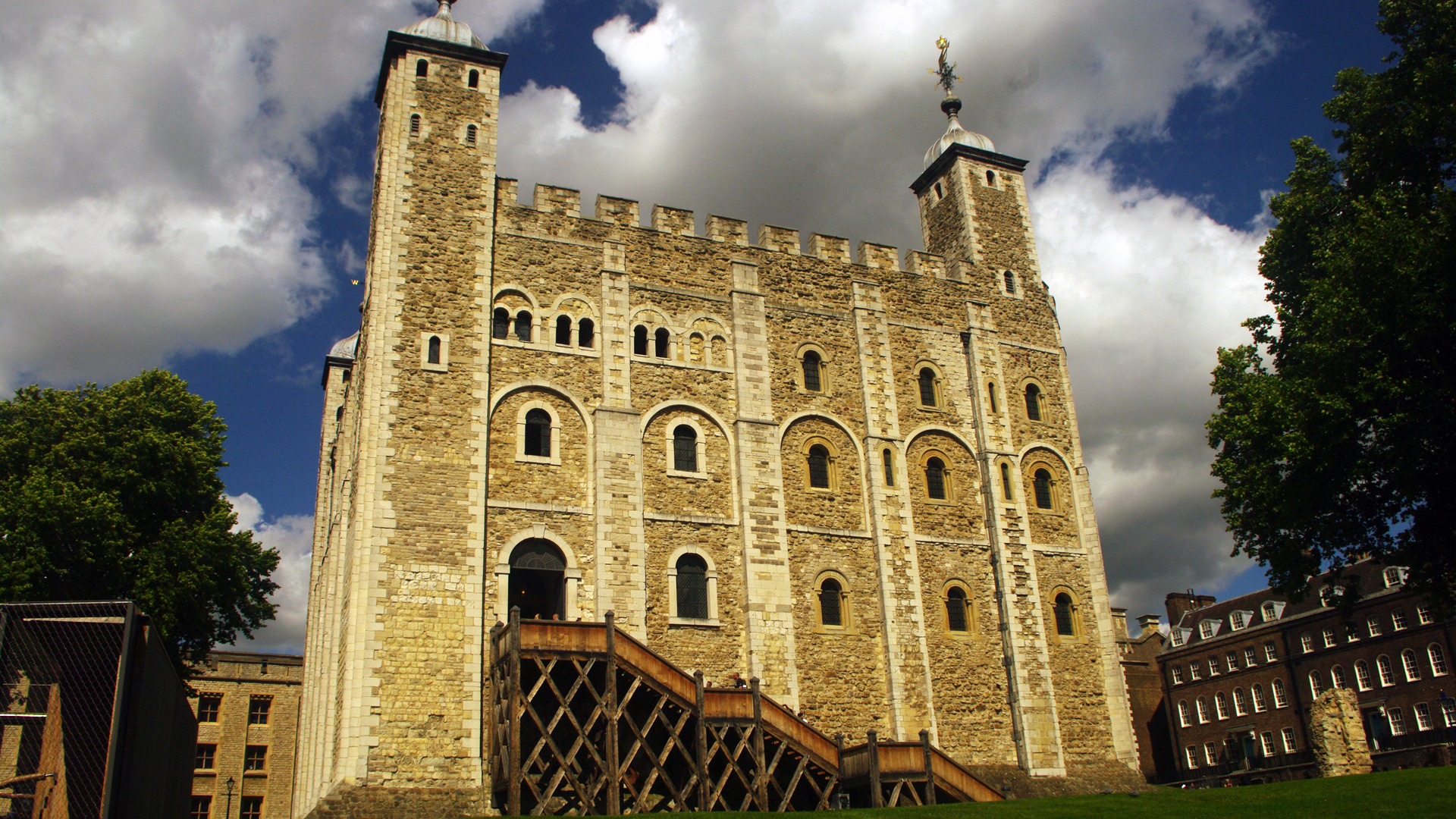
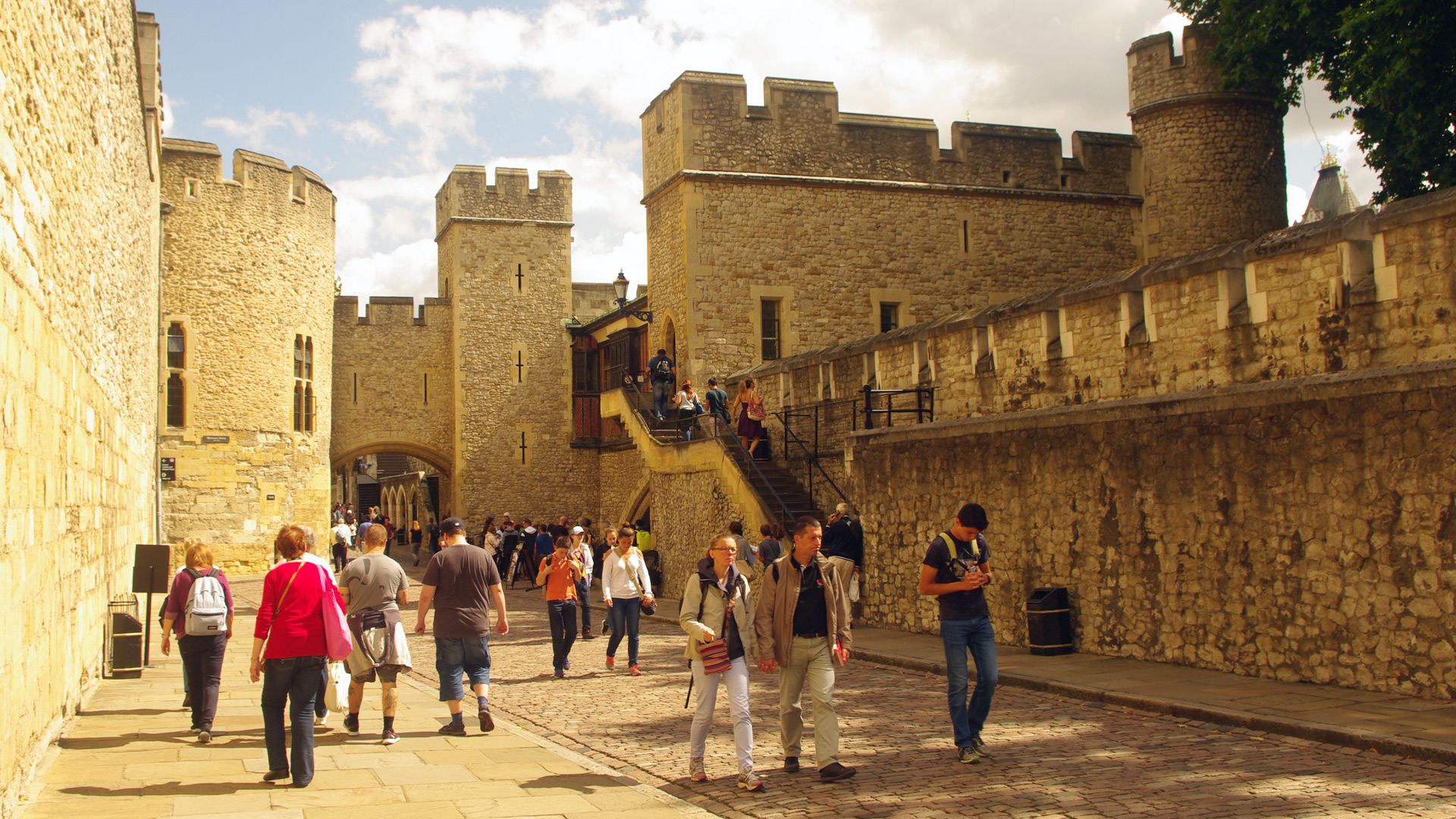
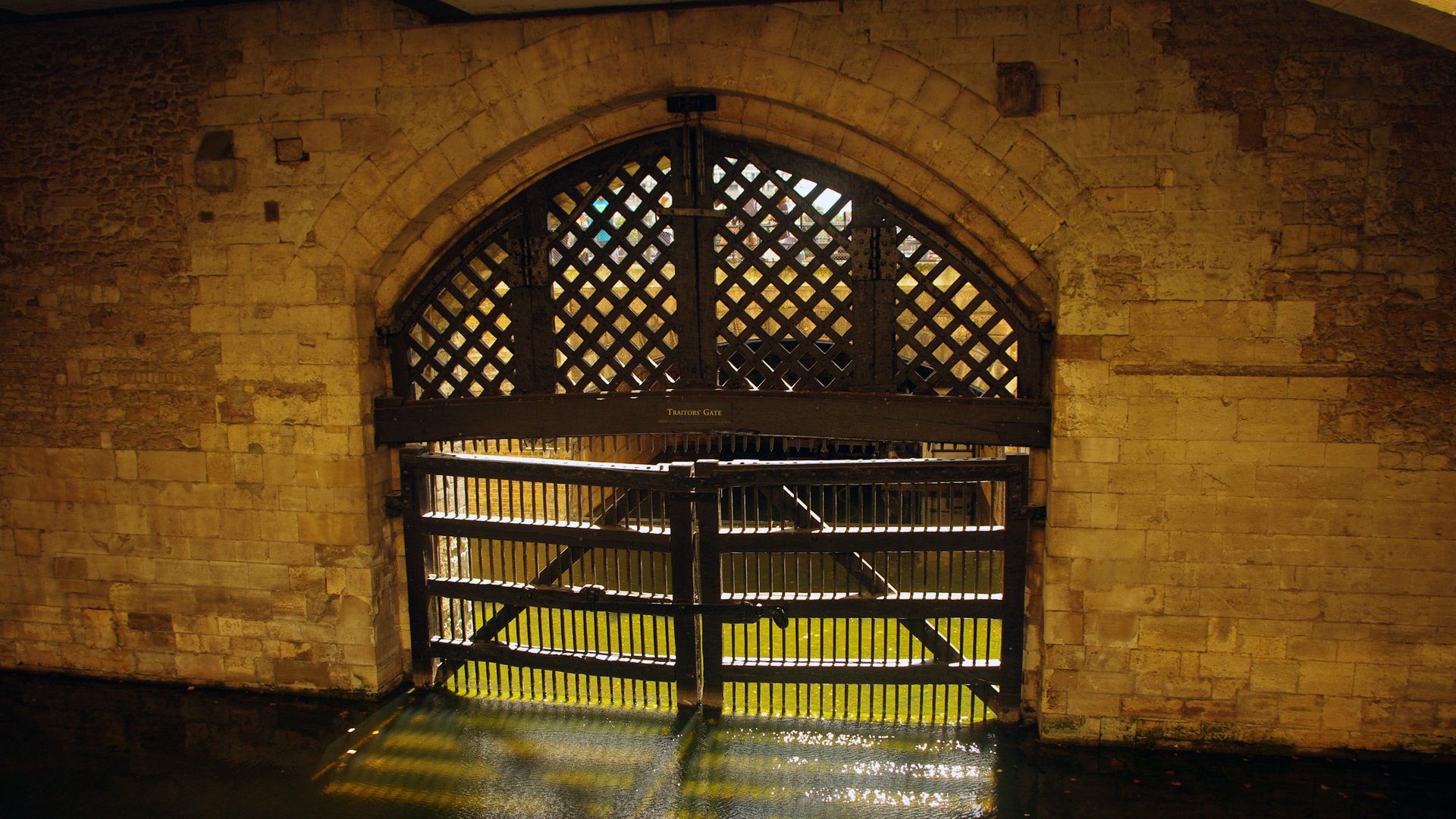
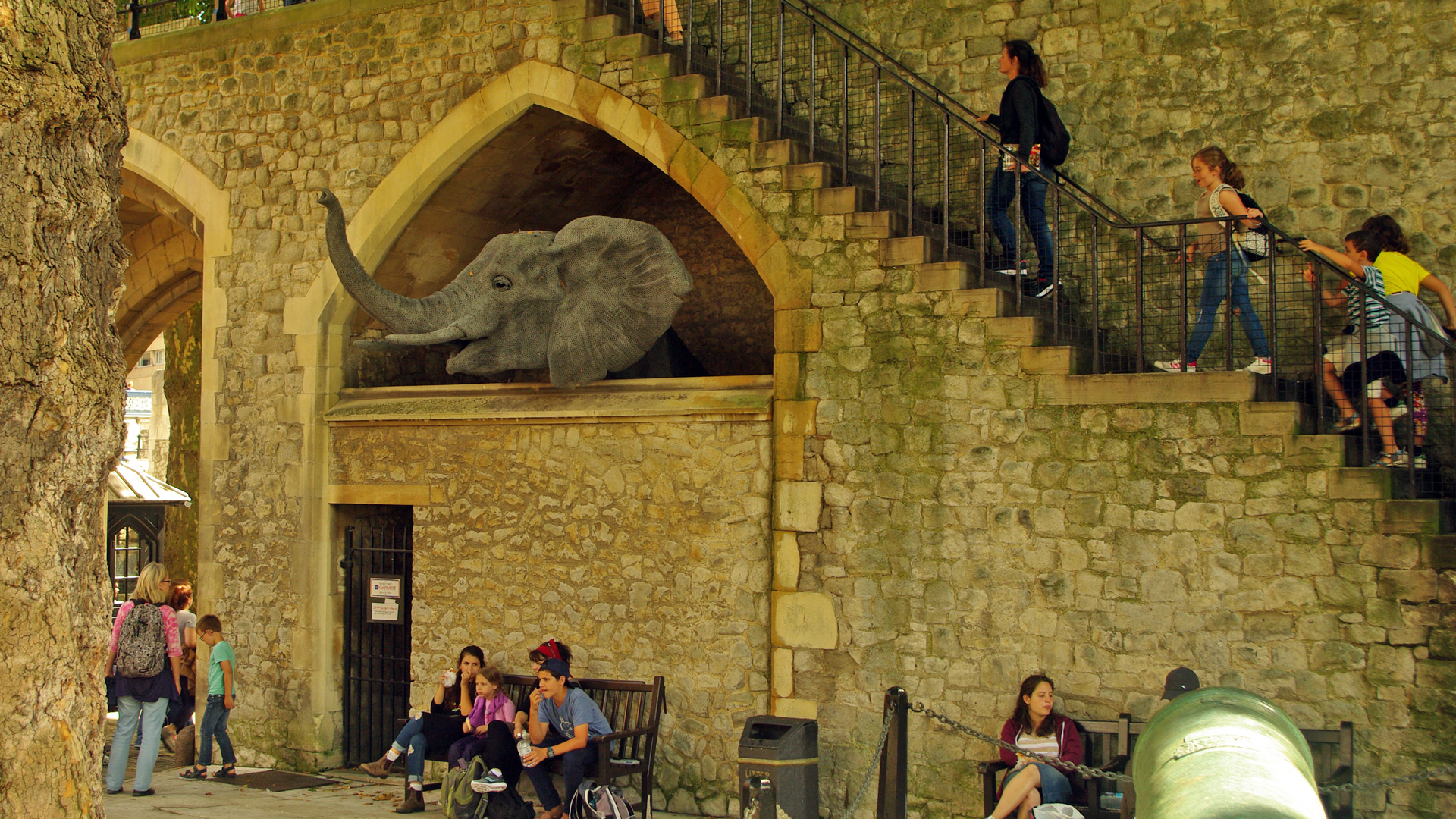
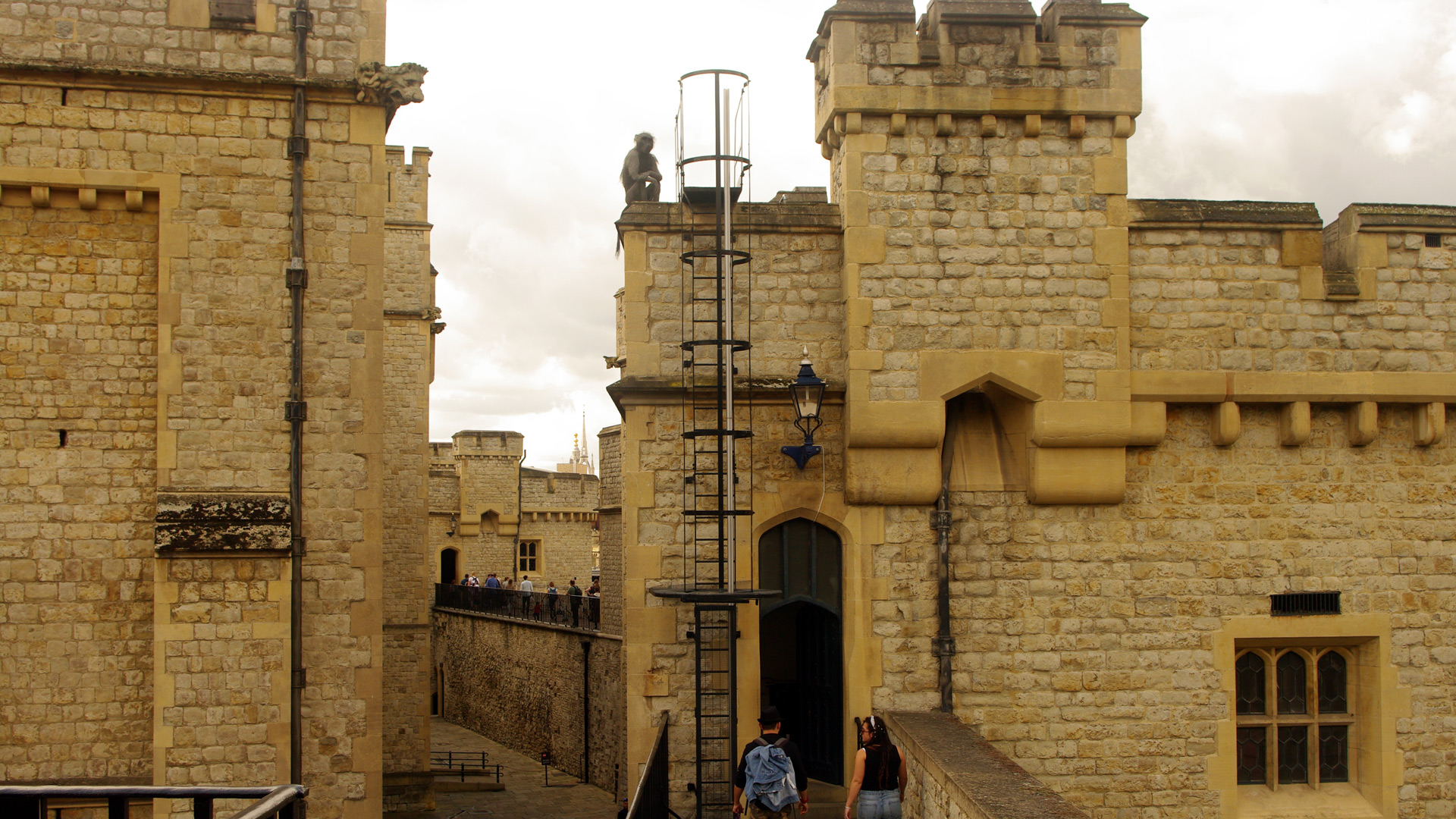
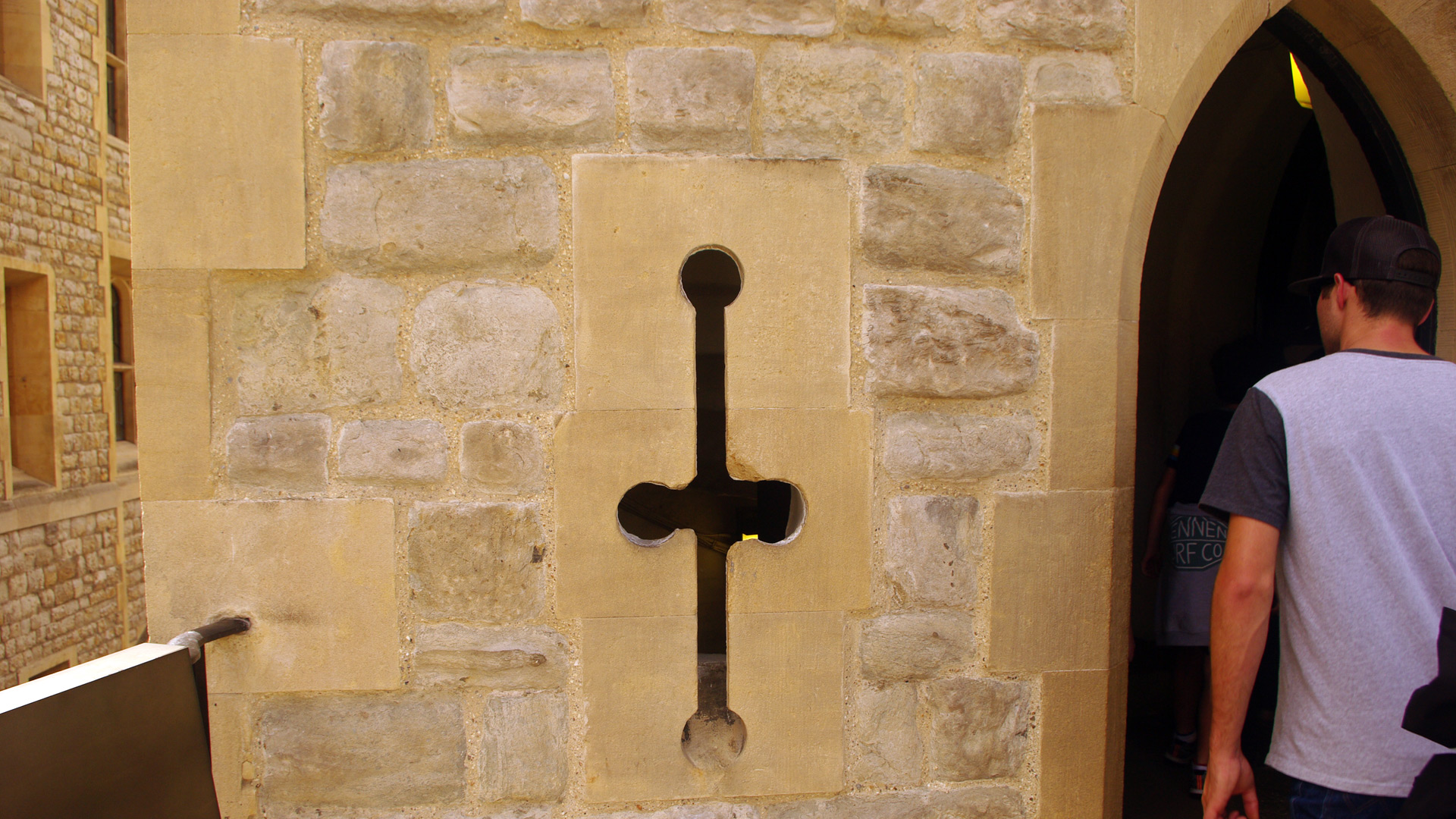
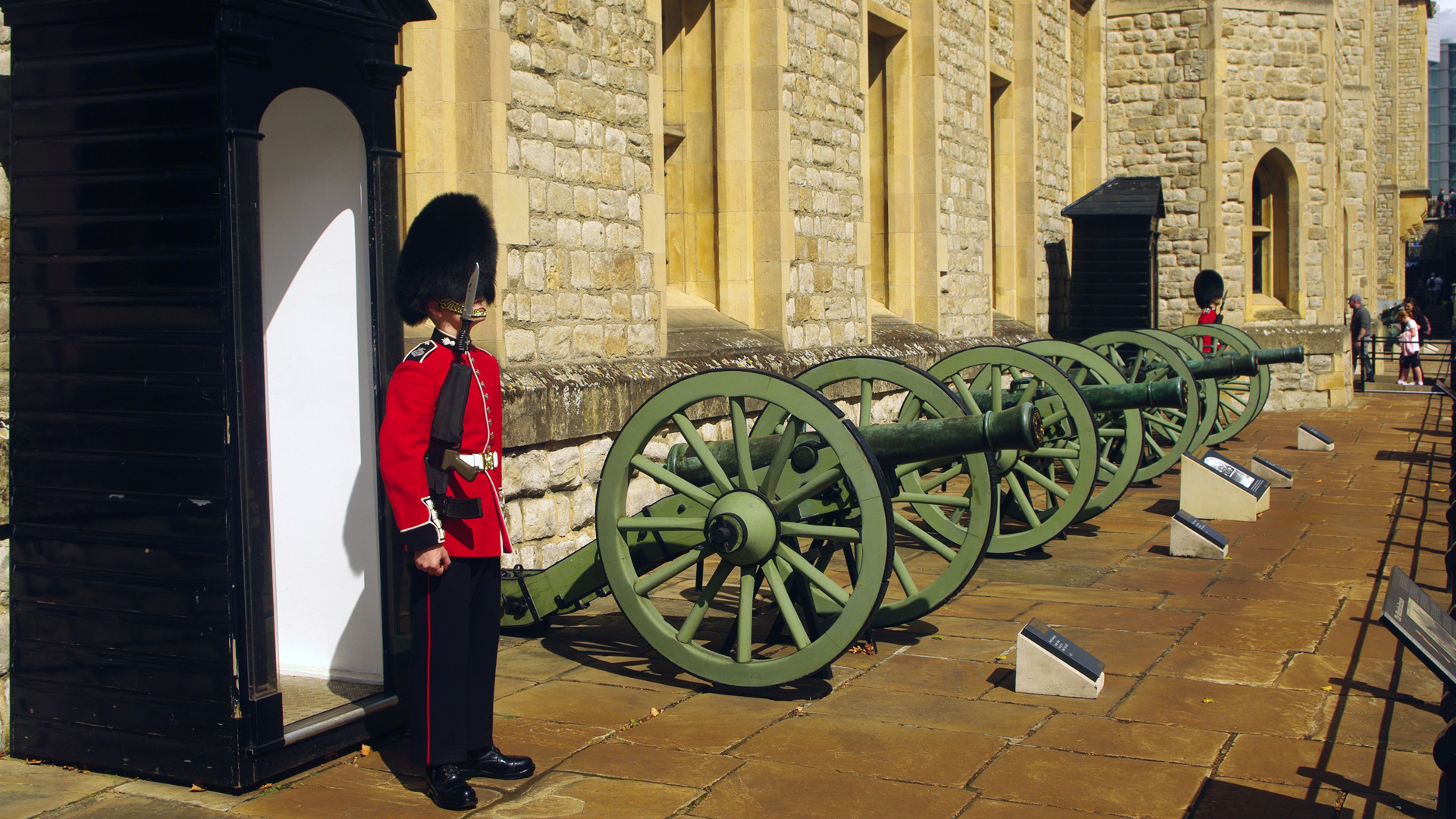
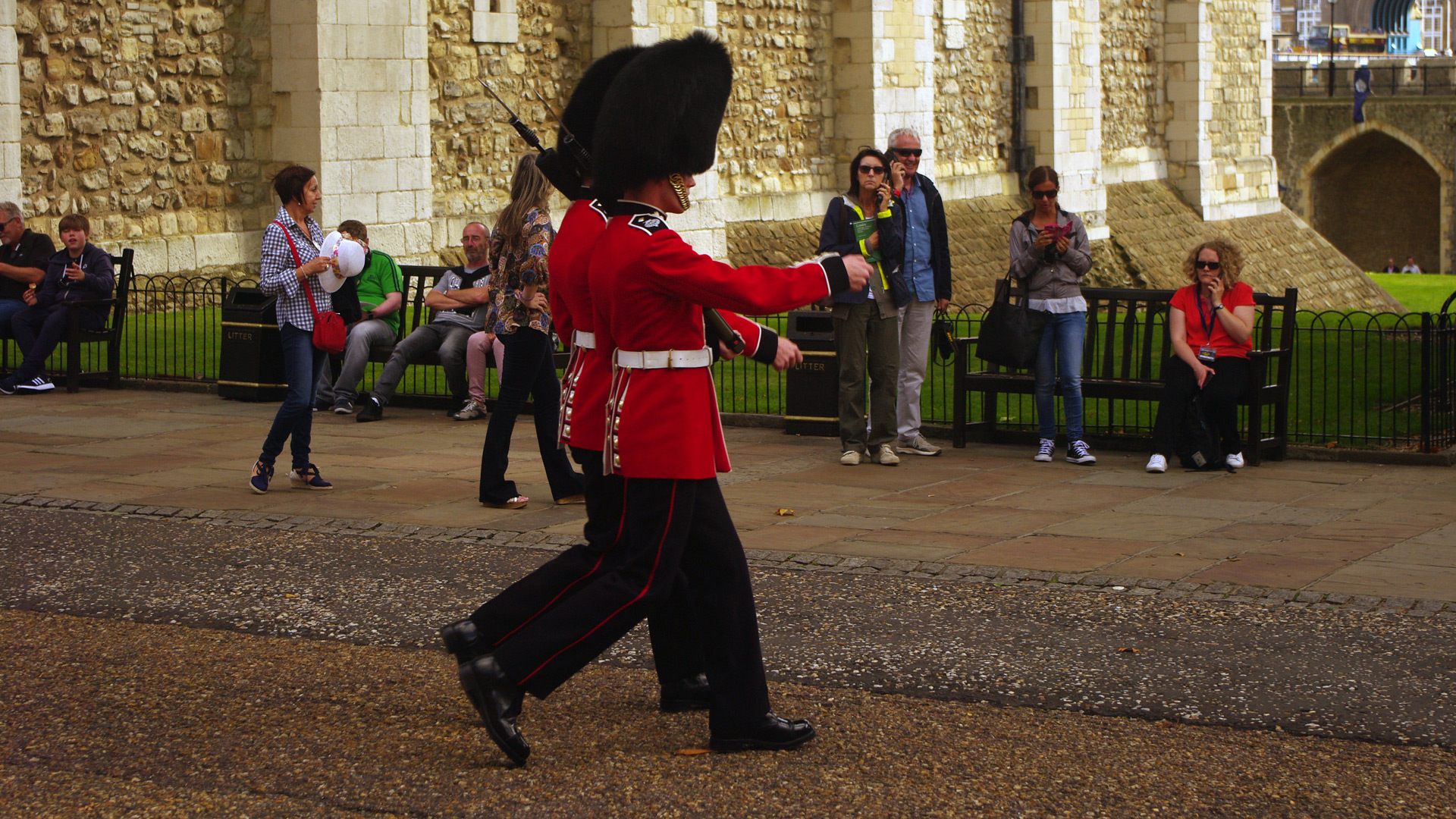
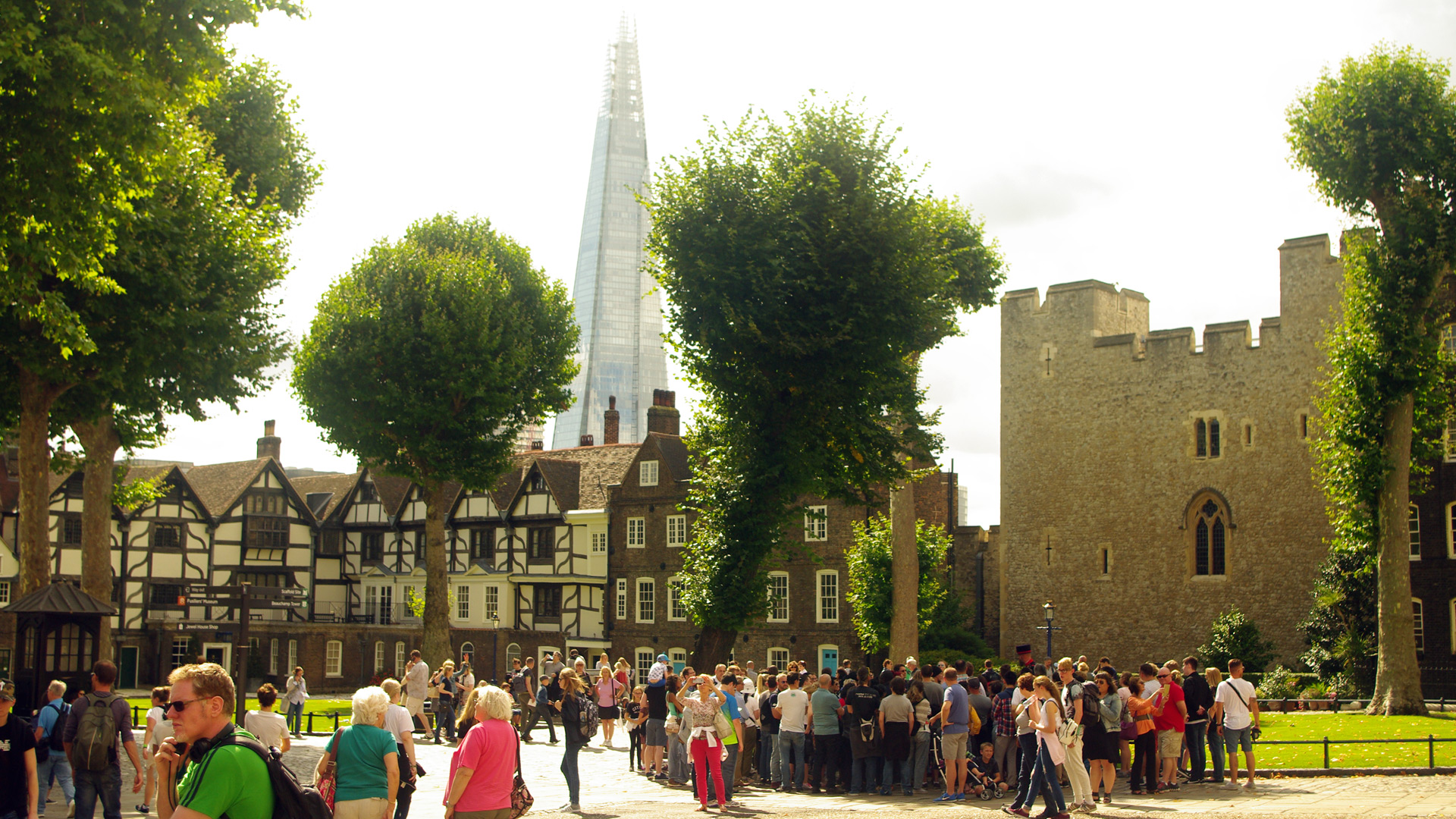
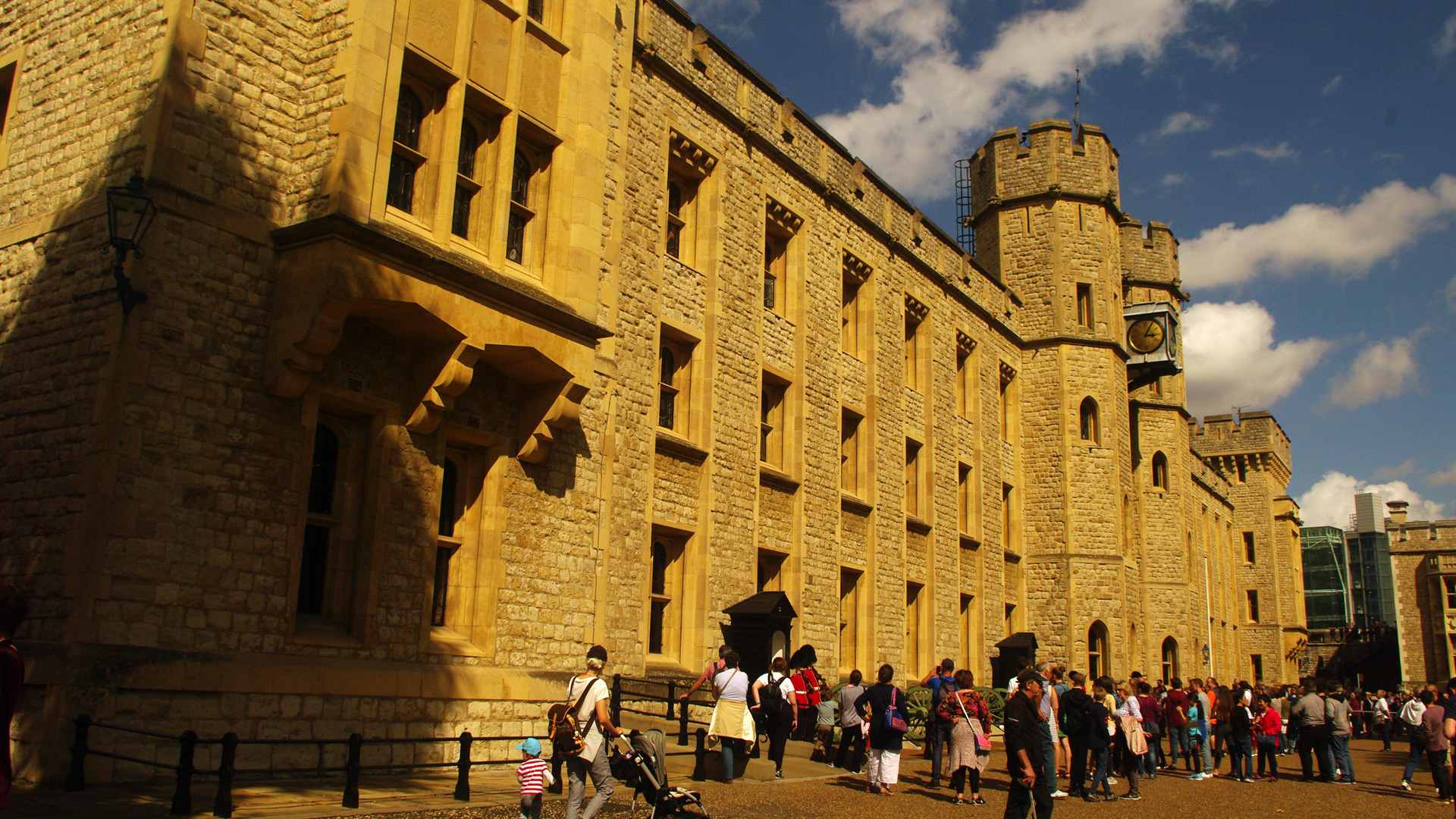
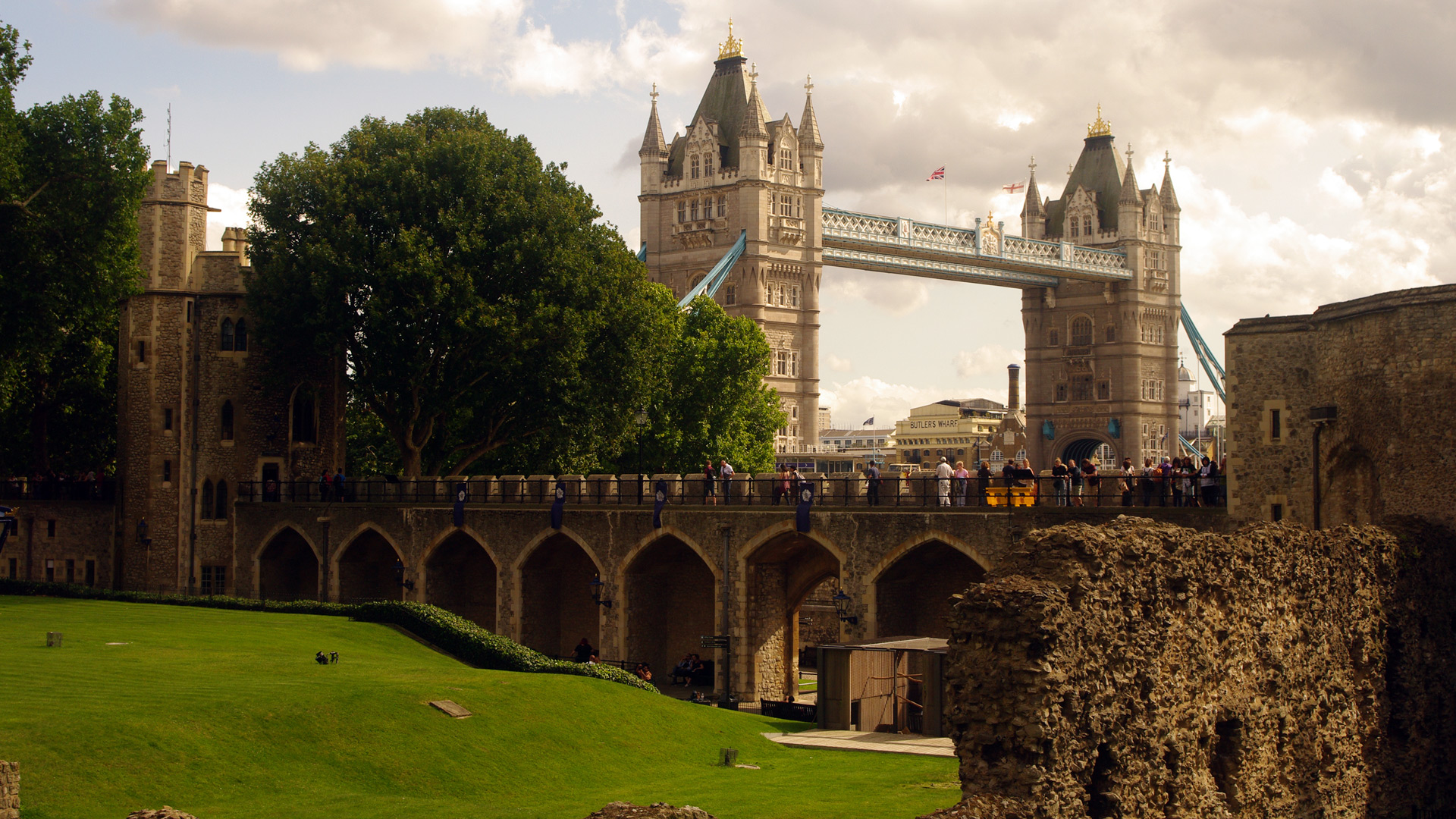
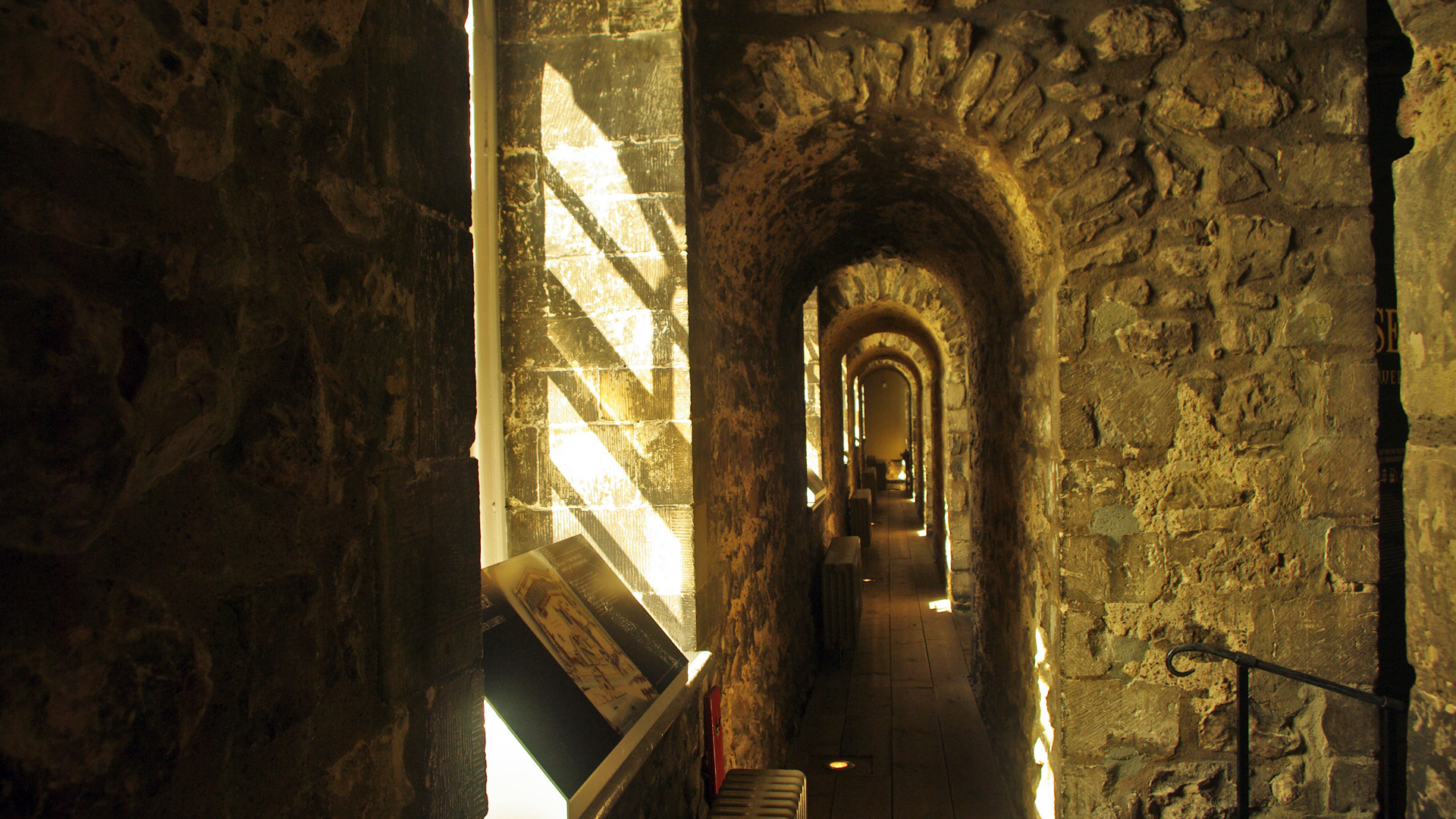
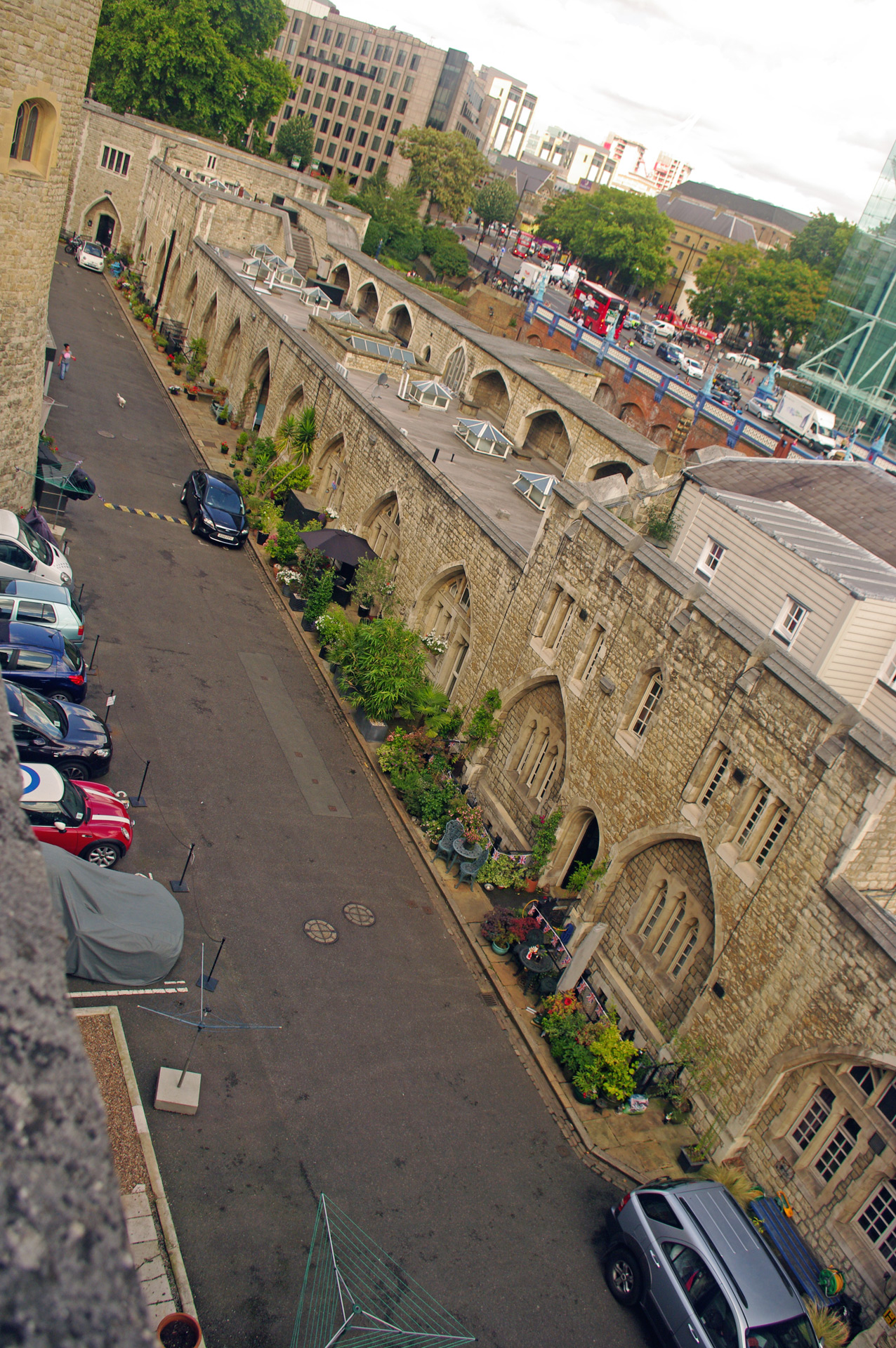
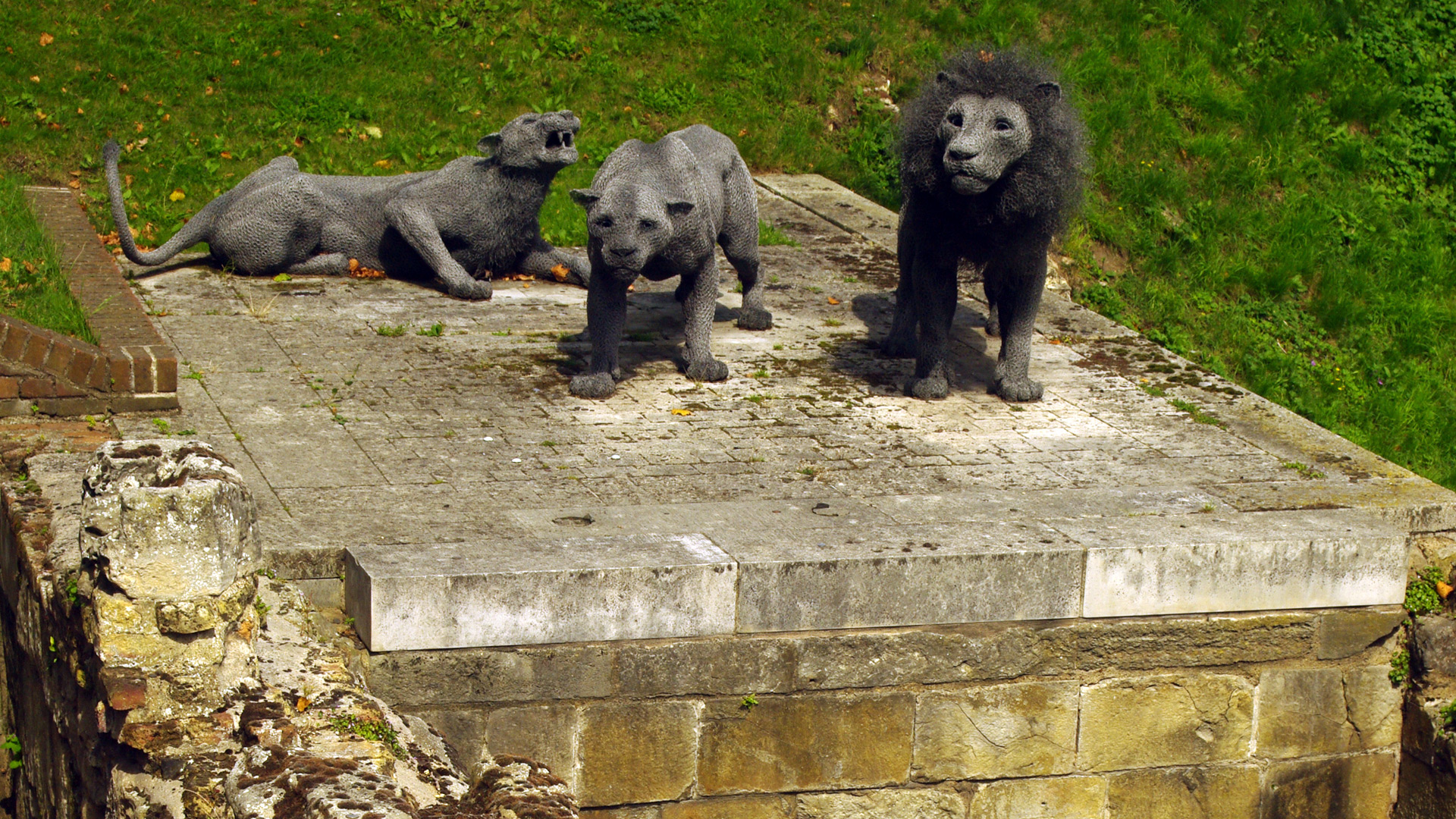
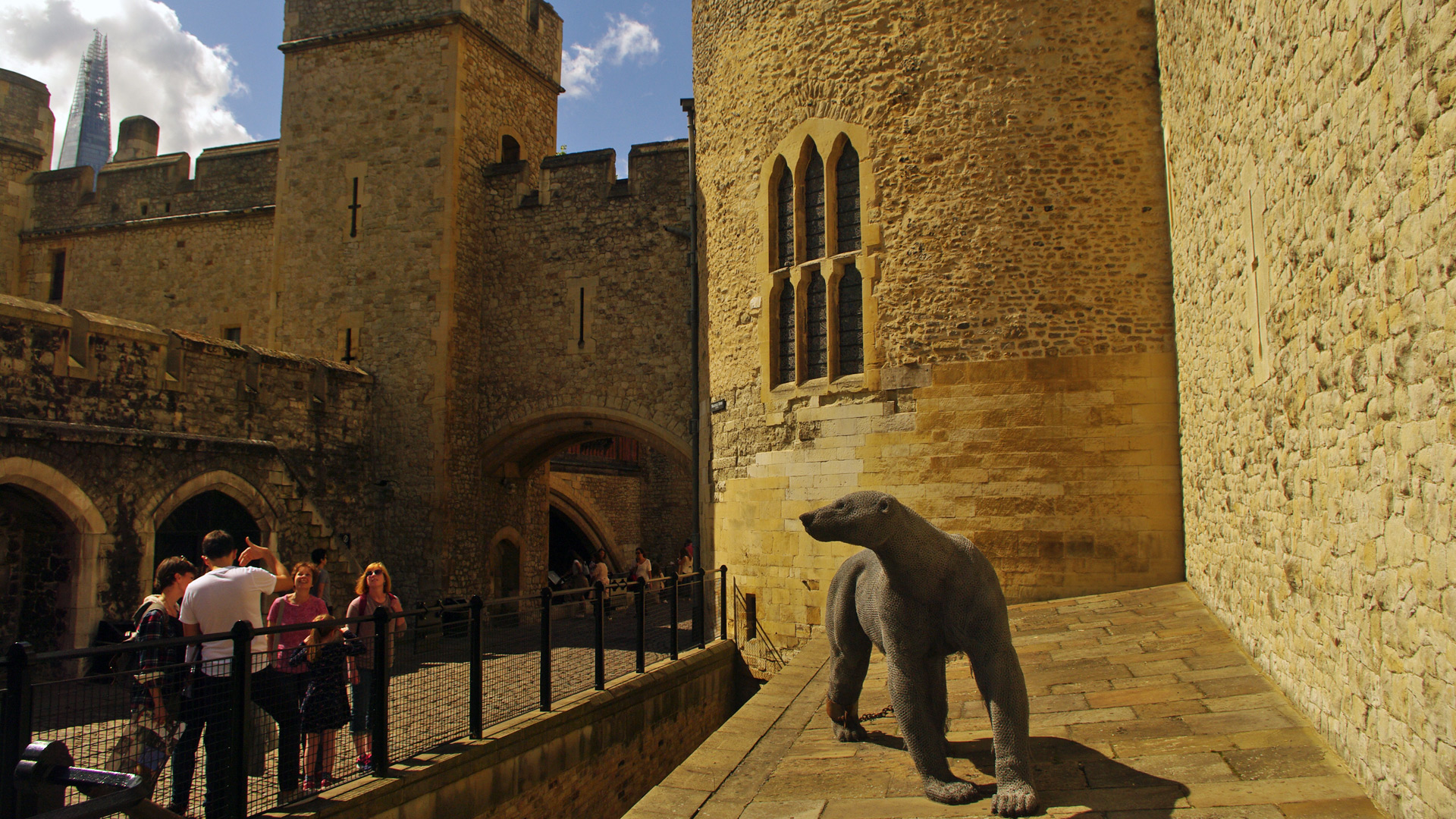
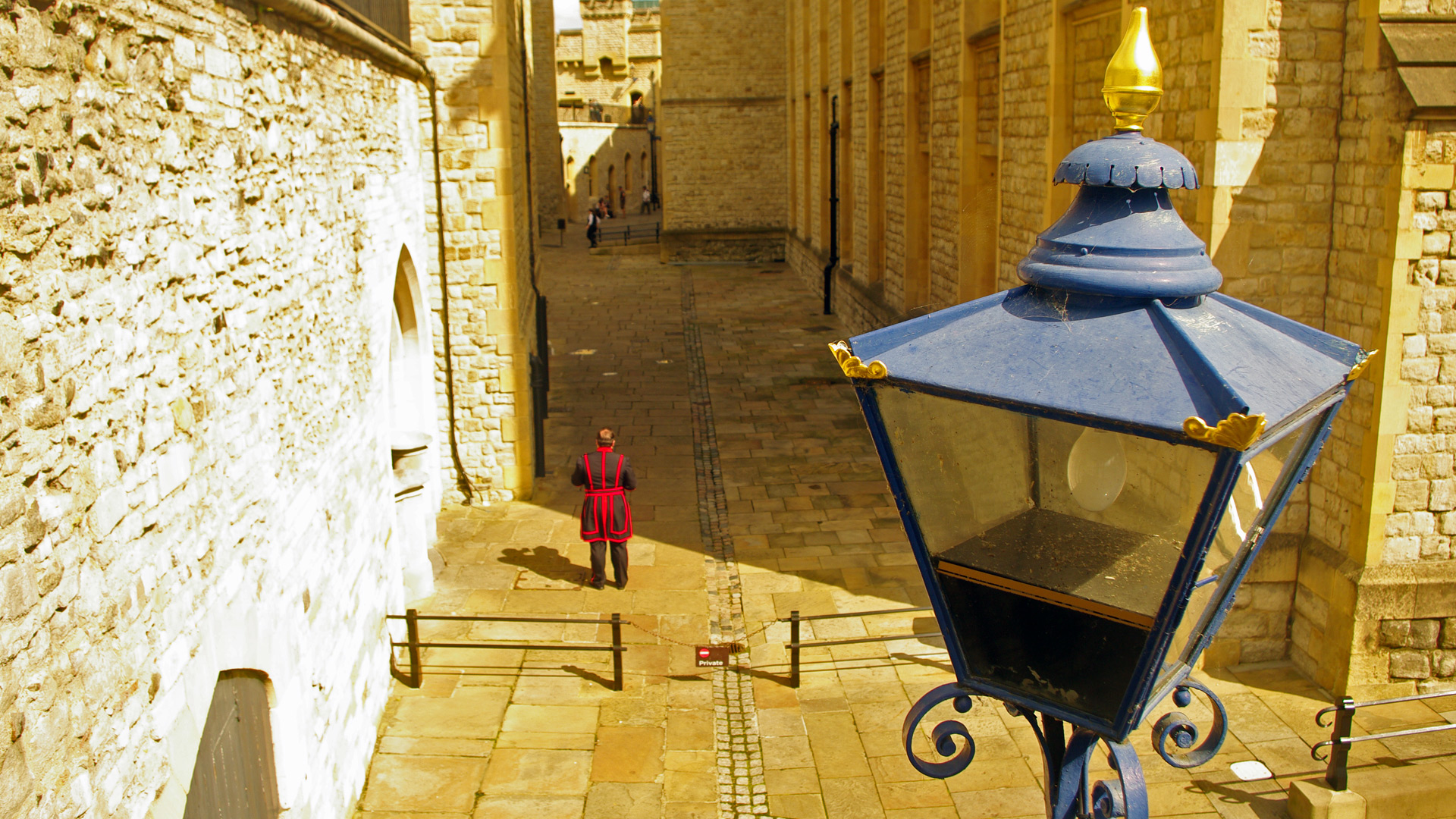
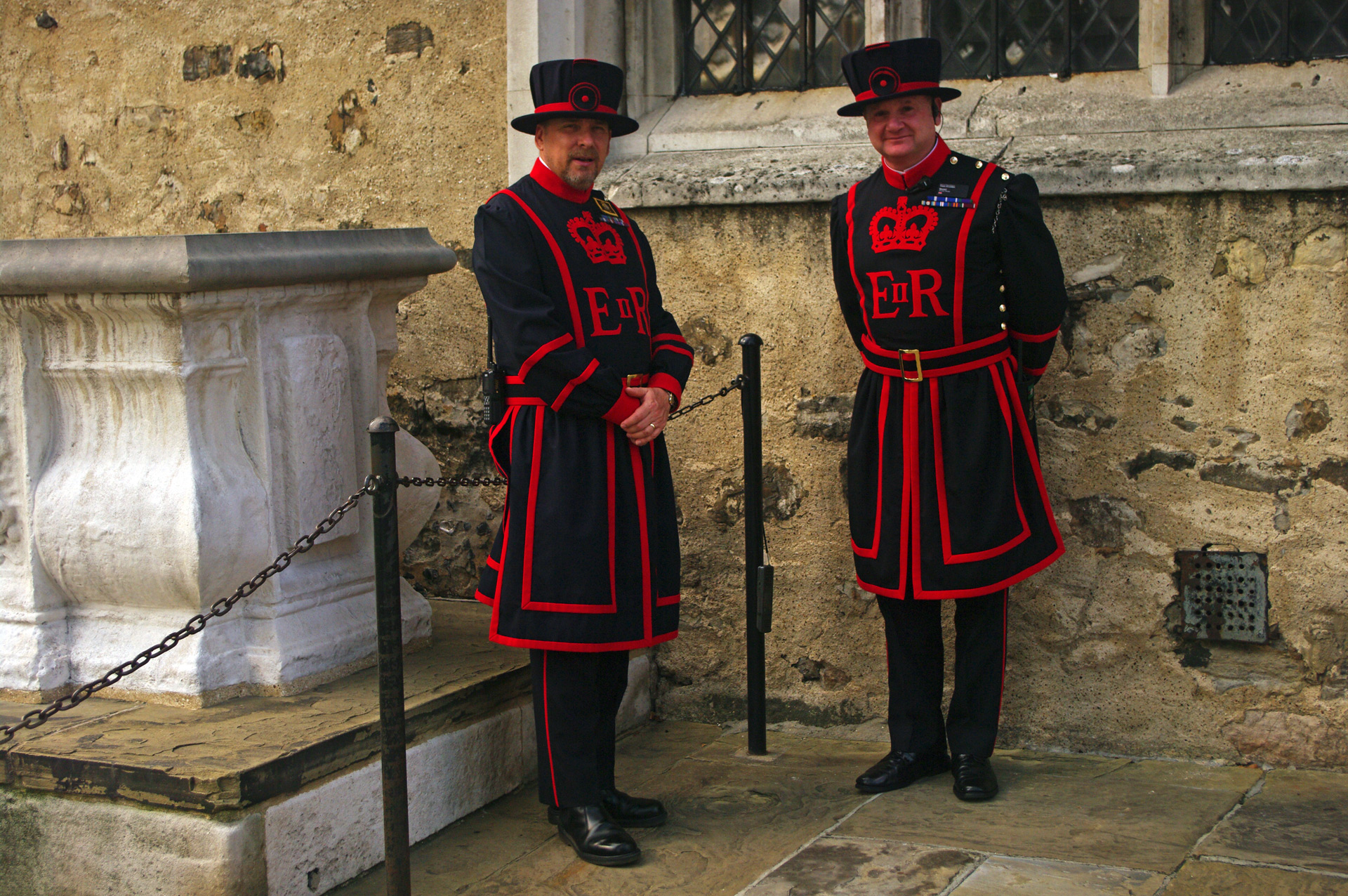
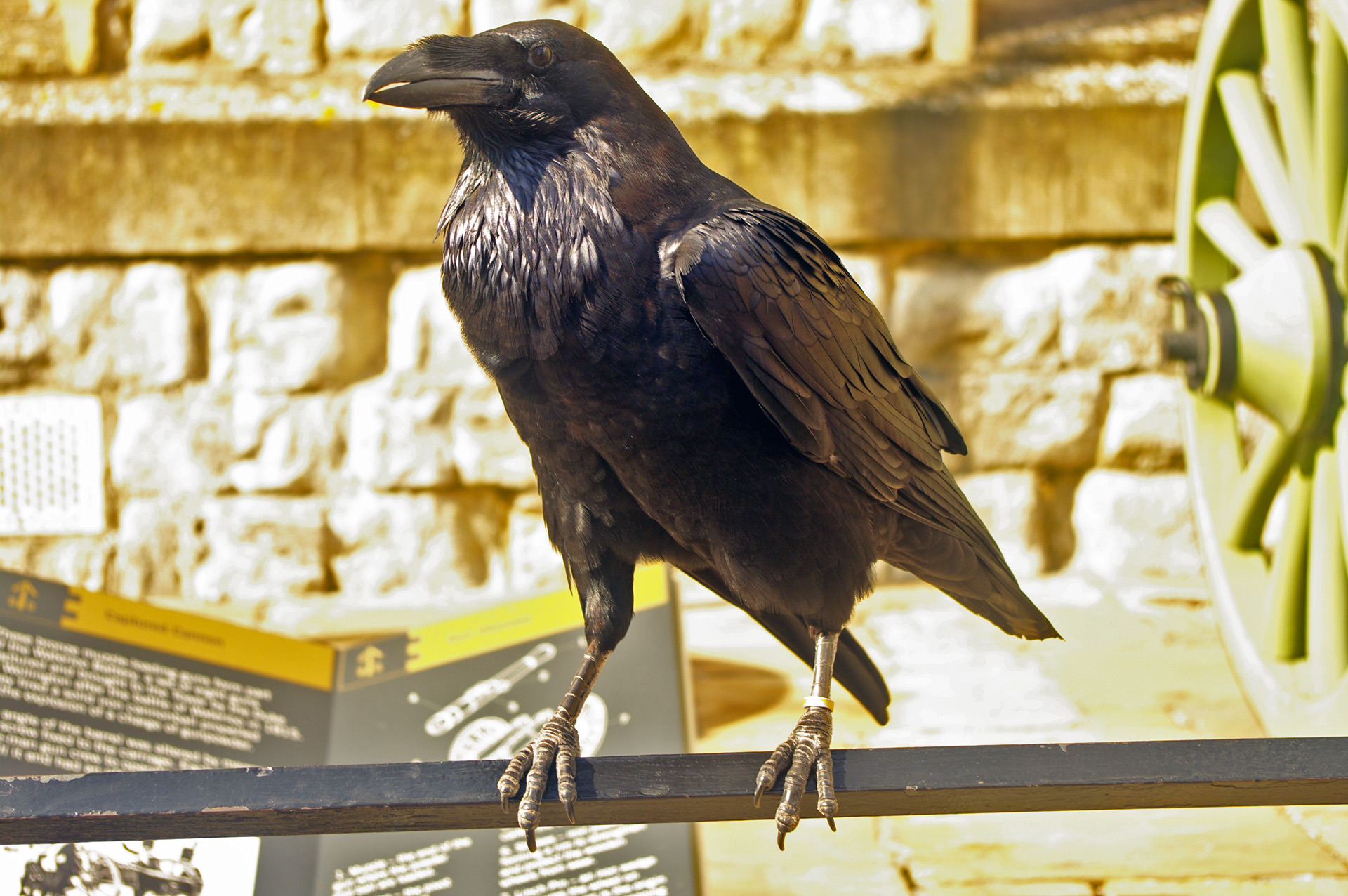
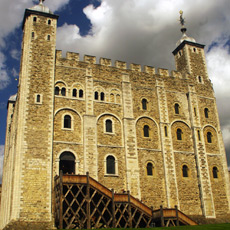
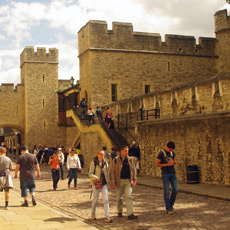
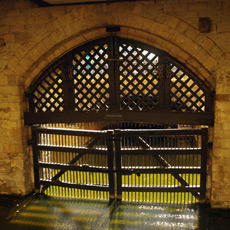
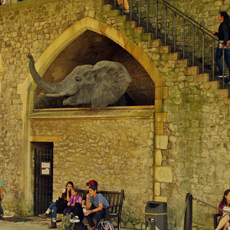
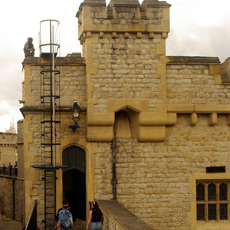
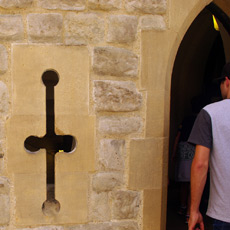
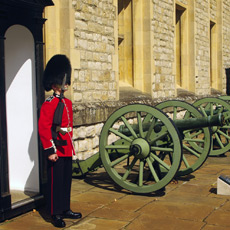
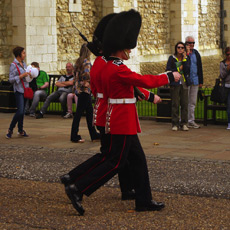
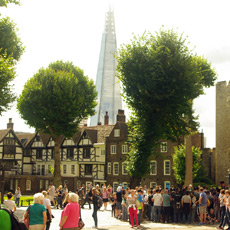
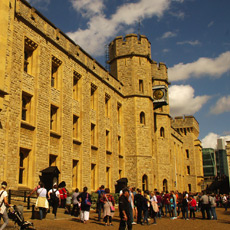
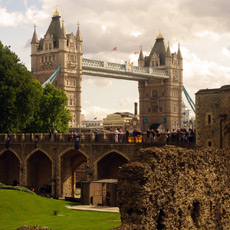
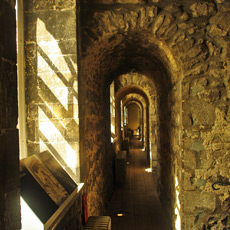
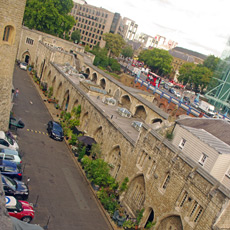
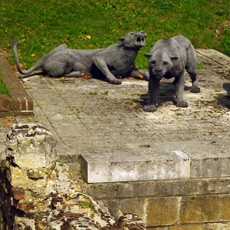
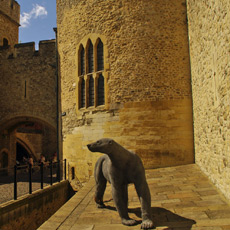
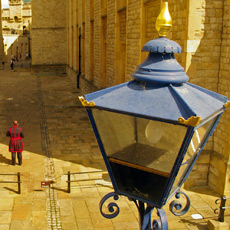
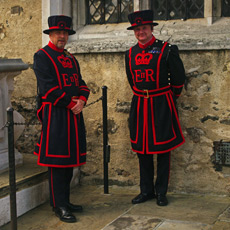
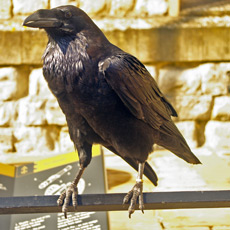
My visit to the Tower of London
As may be expected from one of London's most popular tourist destinations, the Tower of London can get very busy at times. My visit was at the end of August and when we arrived around 1pm there was a short queue to get in, maybe 5 minutes. Once inside the grounds there was room to move around without feeling crowded, a long queue had formed to see the Crown Jewels when we arrived so we decided to see everywhere else first and come back again.
The White Tower is a must but be aware that there a LOT of steps, this is a huge castle keep that is nearly 1000 years old, the thick walls, large internal spaces, not to mention the gardarobes are exactly where royalty and knights once walked (and did other stuff) and it is much more real than you imagined from what you have seen on any historical drama whether real or fantasy,
The red uniformed guards with their large bearskin hats change regularly and can be seen marching about (don't get in their way!), take one of the regular guided tours by one of the Yeoman Warders (Beefeaters) at no extra cost, they will tell you many stories of the place in an entertaining and amusing way. There are also actors at various times in costume acting out episodes from the the past, so watch out for the signs that tell you when and where they will be.
Later in the afternoon the Crown Jewels queue was much smaller so we went in to see them, a 10-15 minute wait and we were in. You pass by them on a slow moving travelator, so everyone gets a good look and not just the little kids in front or the really tall guy.
A great place to visit that really lives up to expectations, not the cheapest but there's a load here to see and it is good value for money.
The Tower of London
Pros
Large and very impressive 1000 year old fortification
in constant use to the present day
In central London, easy to reach
Home of the Crown Jewels
Entertaining and informative FREE tours by Beefeaters
Actors in costume, bring the history to life
A genuine Royal Palace used for hundreds of years
Cons
Entrance fee can be pricey for families, but good
value for money and a little cheaper if you book
in advance or buy a
A London Pass 1-10 consecutive
days with access to over 80 top London
attractions, or
A London Explorer Pass for 2-7
attractions in a 60 day period from activation.
Can
be very busy during the summer months
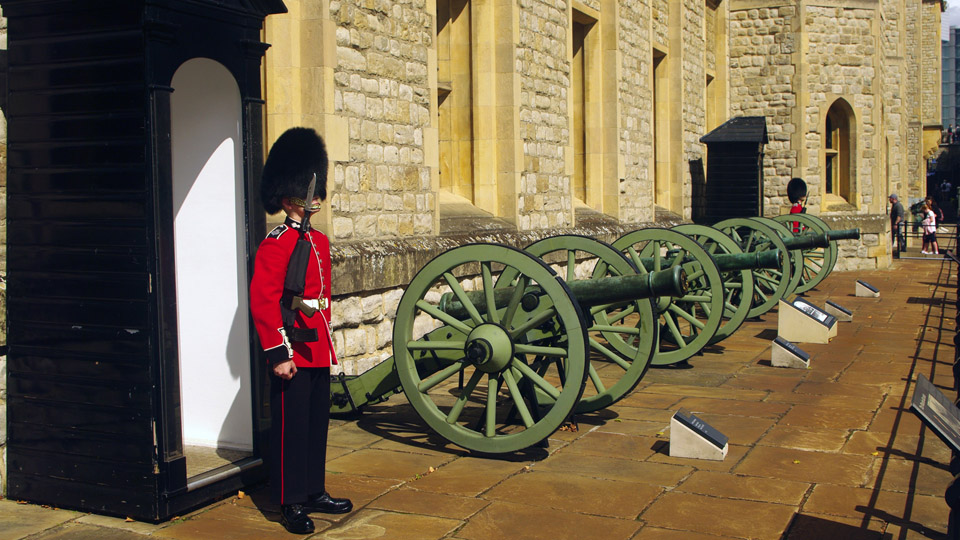
A guard at the Waterloo Barracks - Guards are posted here to protect the Crown Jewels
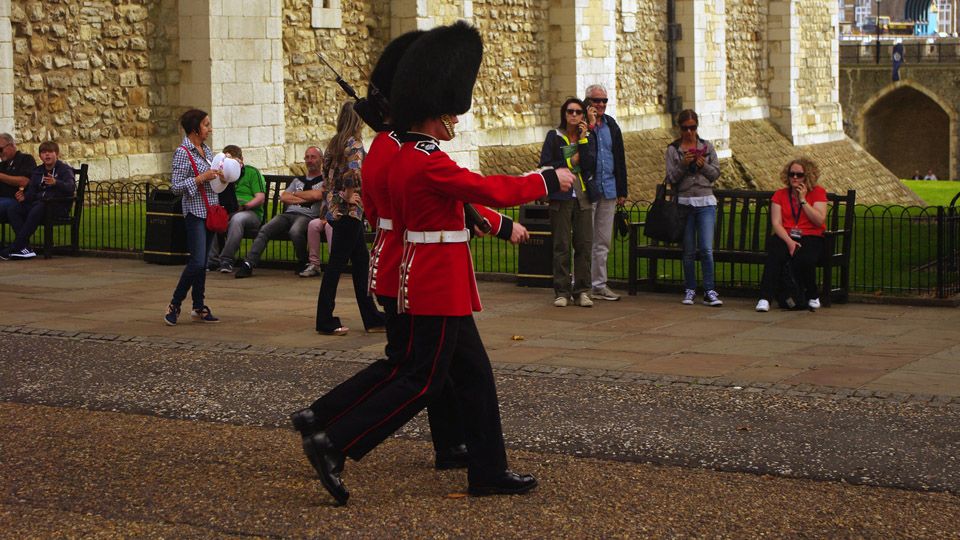
Changing the Guard - Every two hours the guard are changed over, make sure you get out of their way!
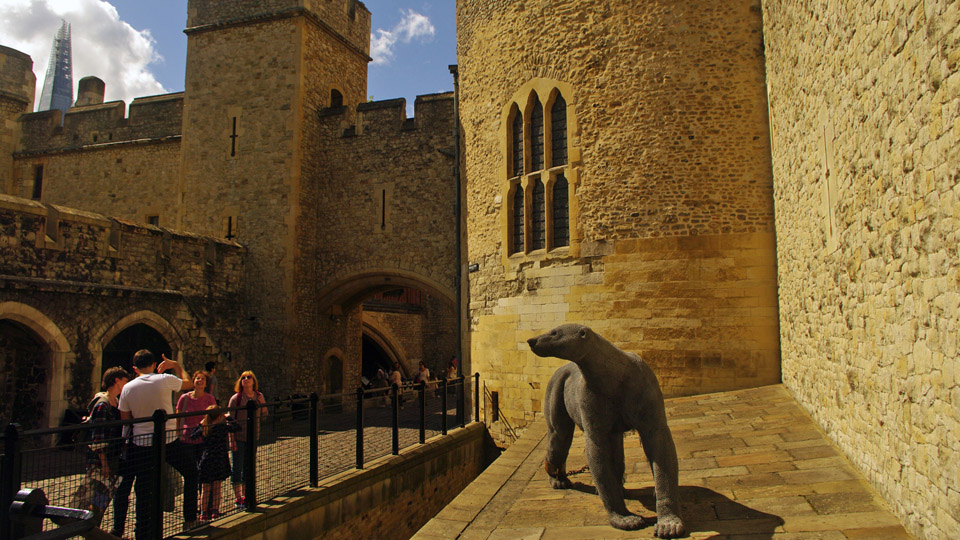
A polar bear sculpture - between the two sets of walls In 1252 the bear gifted from the King of Norway was held by a long chain and allowed to fish in the Thames
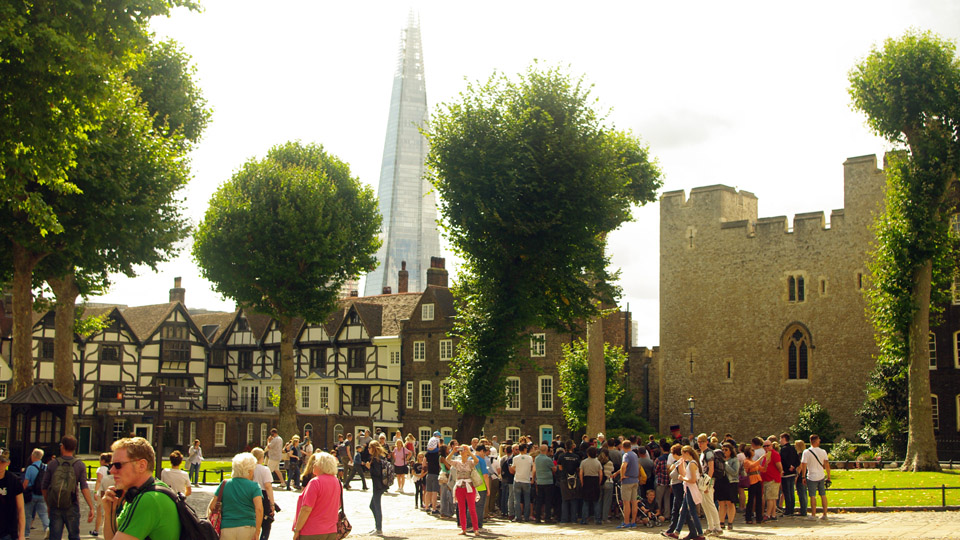
The Queen's House - Half timbered buildings in the foreground, a very modern building - the Shard, behind
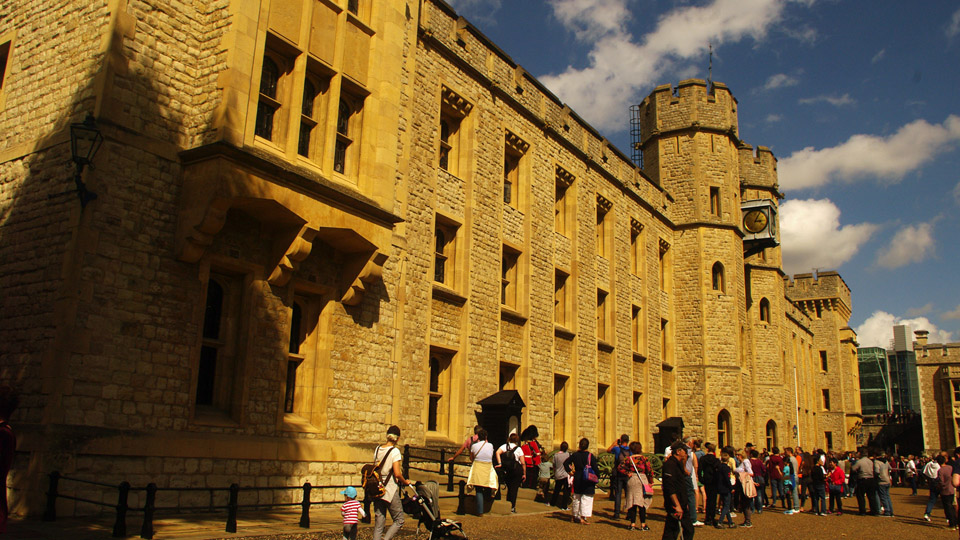
The Waterloo Barracks - Built in the 1840's and originally home to 1,000 soldiers, it now houses the Crown Jewels
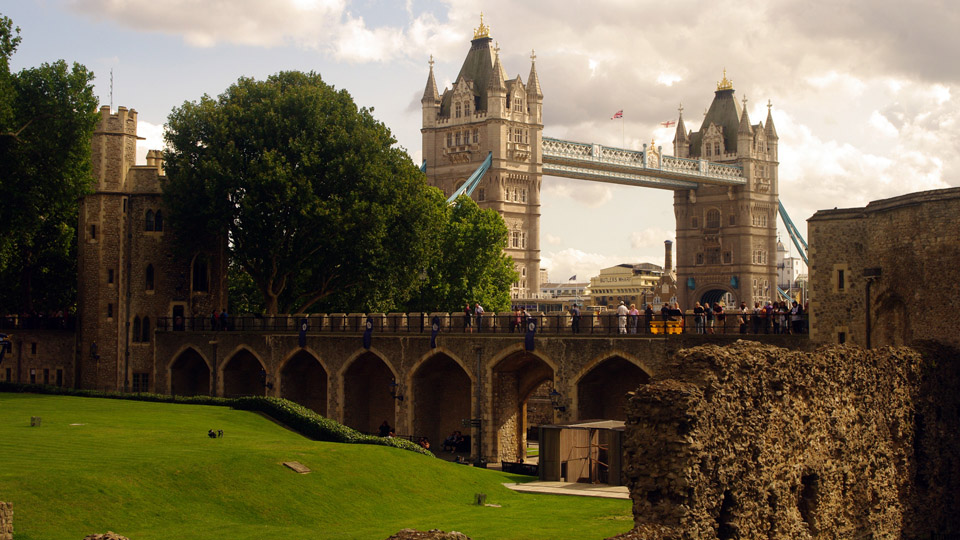
Tower Bridge - seen from inside the Tower of London
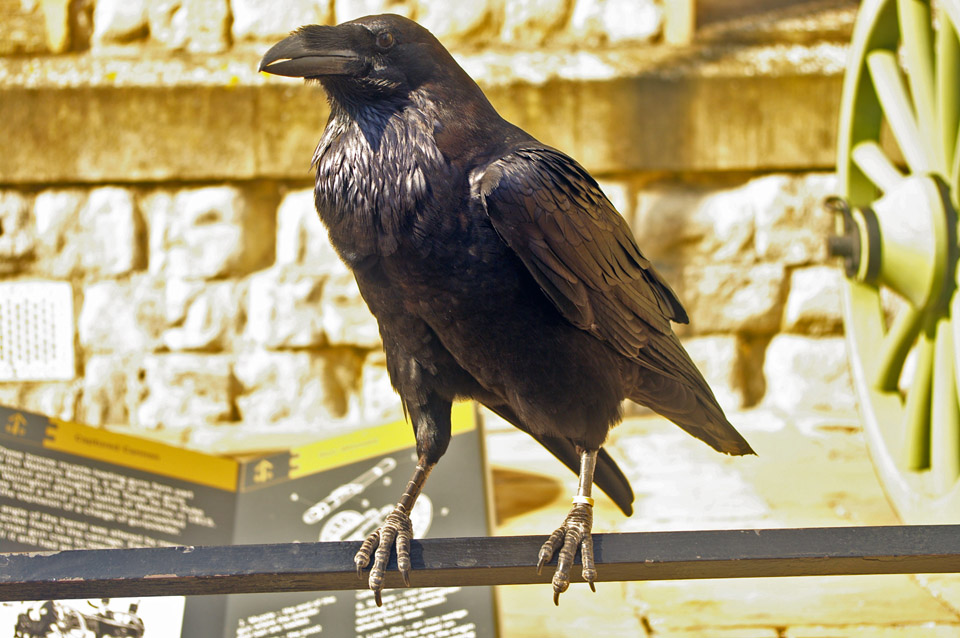
A Tower Raven - If the ravens leave the Tower of London, the Crown will fall and Britain with it - they are well looked after
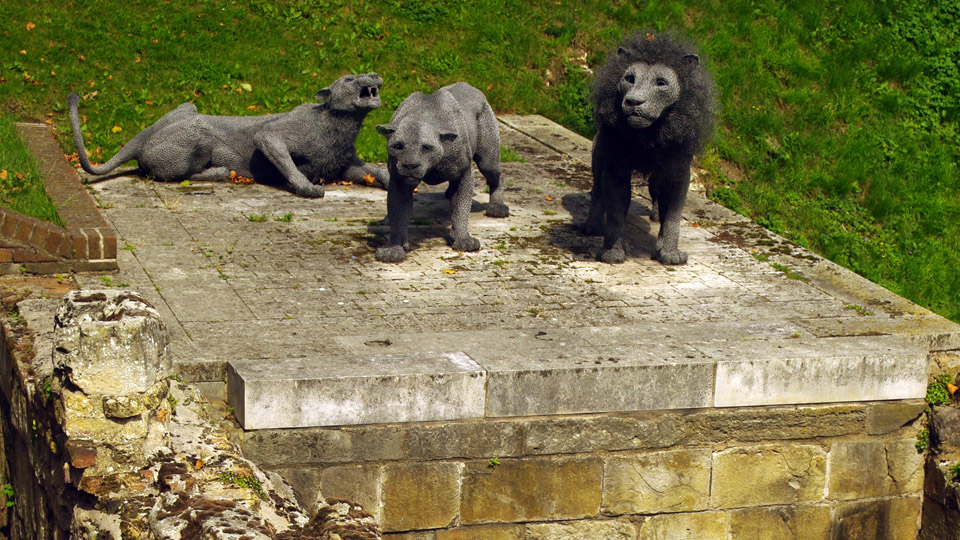
Big cat sculptures - The Tower menagerie housed nearly 300 animals over its 600 years
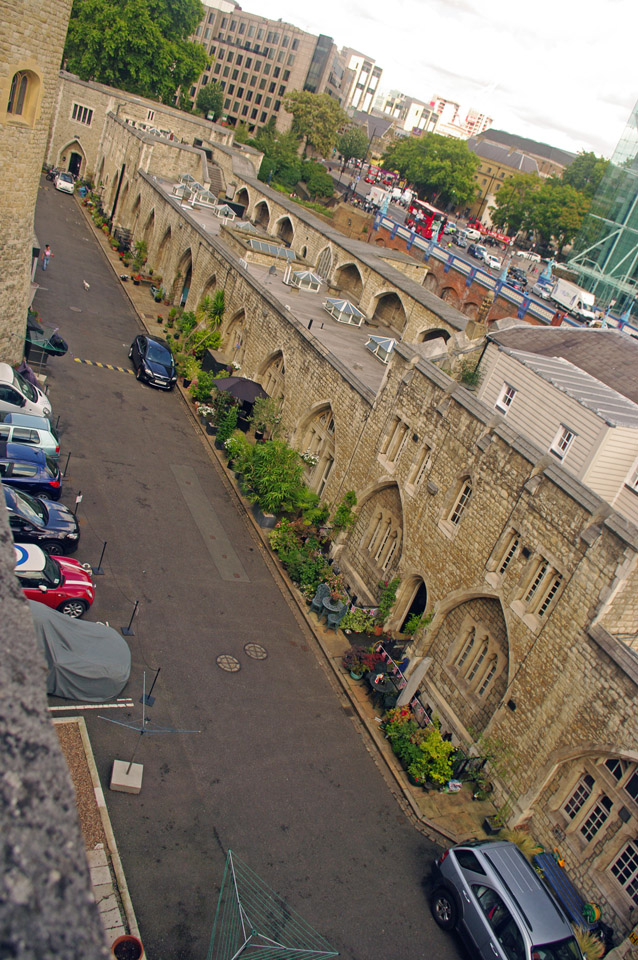
Homes built into the outer wall - These house the Beefeaters (yeoman warders) and others who work at the Tower
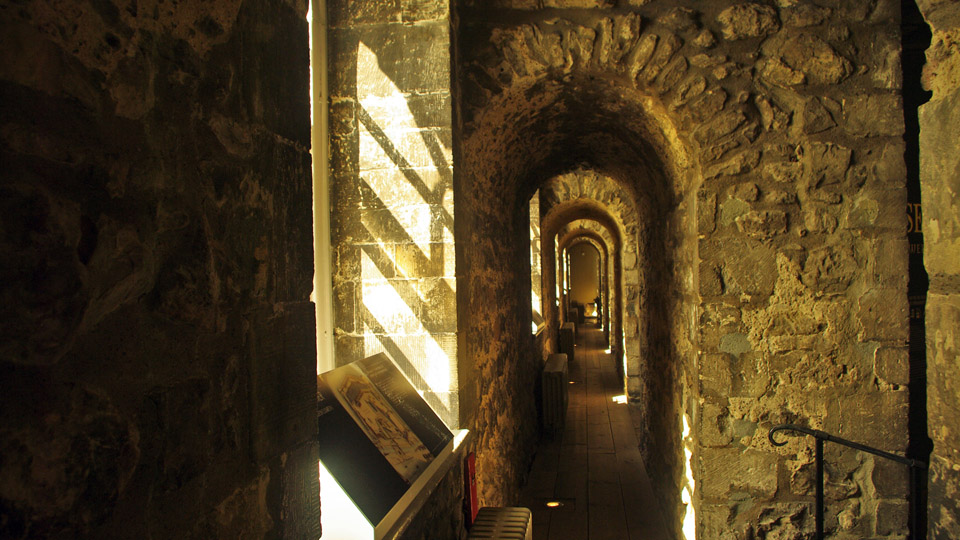
Inside the White Tower - The central fortification, the massive thickness of the outer walls and inner strengthening can be seen, the windows were enlarged and glazed in the 17th and 18th centuries
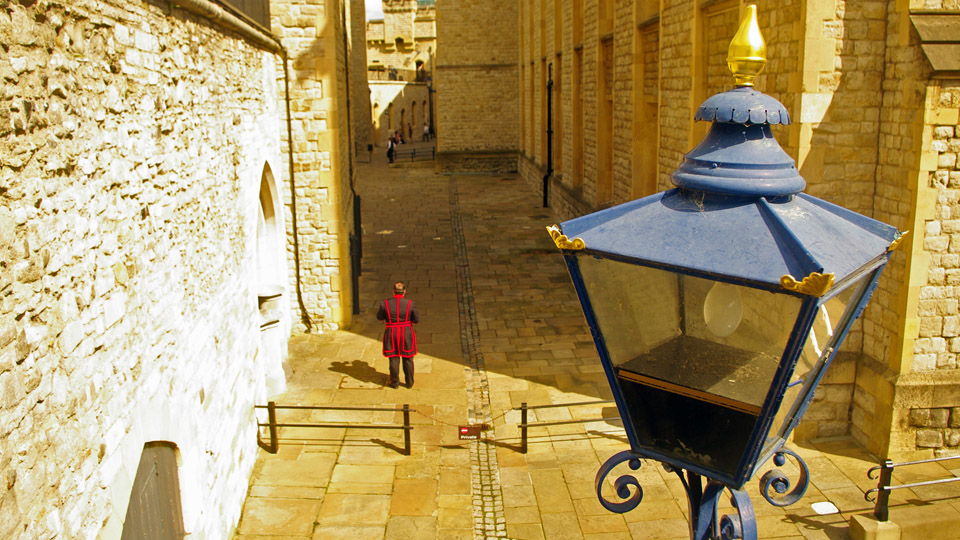
A Yeoman Warder - at the end of shift The Tower is a workplace for many
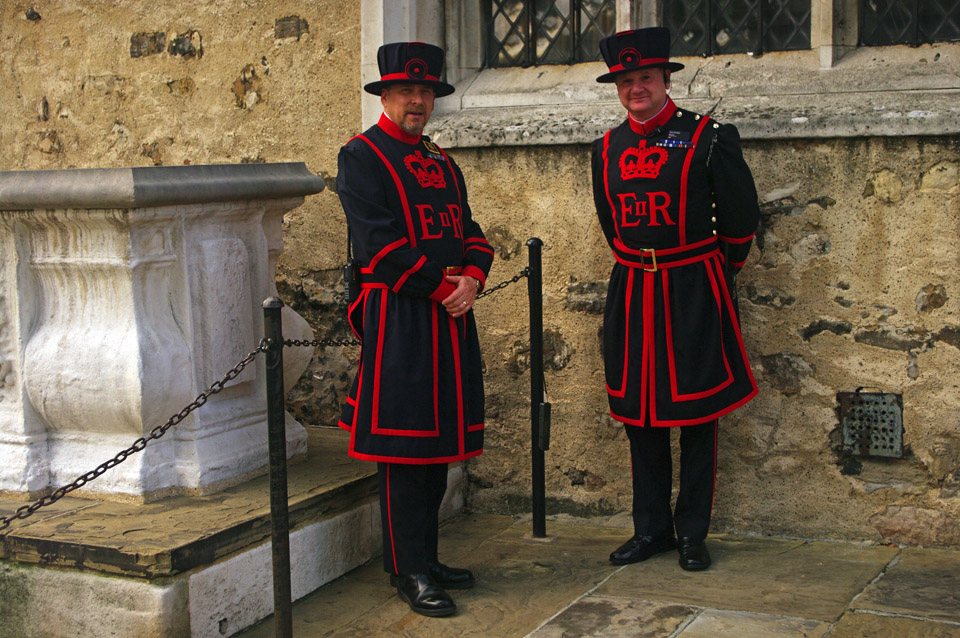
Yeoman of the Guard "Beefeaters" - in everyday dress uniform, at least 22 years in the armed services with good conduct are required to be considered for the posts
More pictures: Central London | Tower of London | National Gallery
